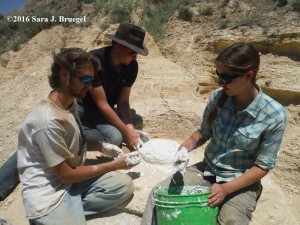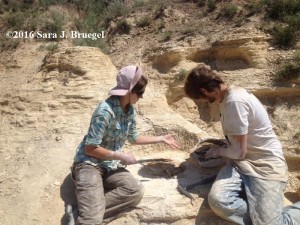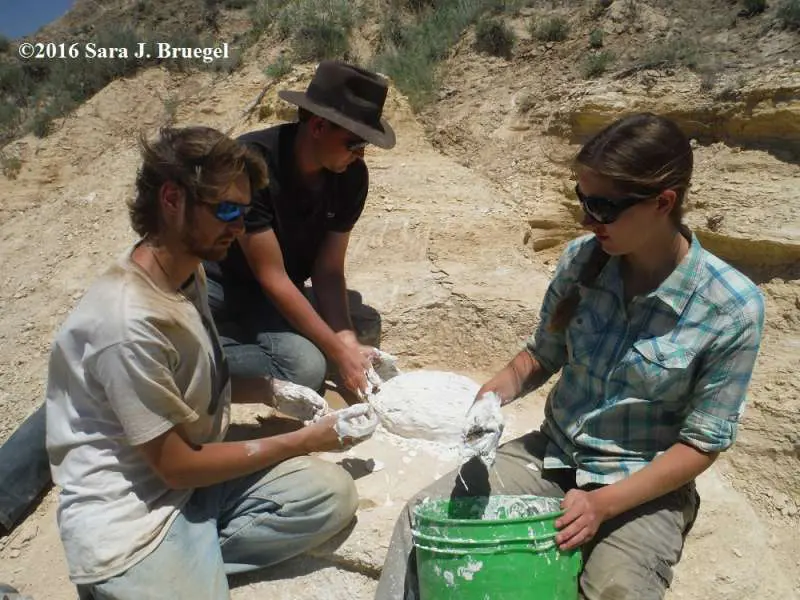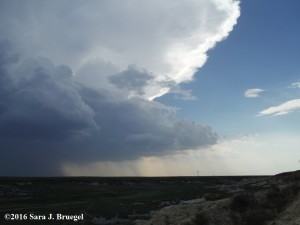
A snappy breeze broke the intense heat of the mid-afternoon summer sunshine. Rolls of thunder sounded in the distance, now a little closer than before. Looking up at the growing storm clouds, I knew it was time to wrap up working for the day and get back to shelter. We got to just the right stopping point when the time came to head in before the storm hit. Just like other paleontology digs, out in the field, working time goes by remarkably fast. A couple of weeks ago, I got to spend some more time excavating fossils in Kansas (read about previous Kansas digs here).
While it would have been neat to discover something big or beautifully complete this year, finding fossils is only part of the process of a fossil dig. Today, I’d like to walk with you through part of the fossil excavation process that happens in the field. Sometimes it takes a while to get familiar with how the fossils in different areas look, and tell what distinguishes them from rocks and minerals of the region. Once you find a fossil, don’t just pick it up. First you need to mark the spot you found and scan the area for other pieces of the fossil and collect any loose, broken pieces on the surface and keep them in a labeled bag.

Once you have searched for and collected loose pieces, you are ready to really start digging. Ideally, it’s best to keep as much of the original dirt on top of and around the fossil while you are out in the field. Uncovering the entire fossil can be done later, in the lab where it is being prepared. Your goal in the field is simply to find the edges of the fossil so that you know how big of an area to take out of the ground. In the picture below, you can see part of either the tail or fins of a fossil fish sticking out between the rock layers of a small hill. Part of our team worked on finding the edges of this fossil so that we could cut out an entire chunk of rock with the fragile fossils still intact, called a fossil “field jacket”(more about field jackets here).

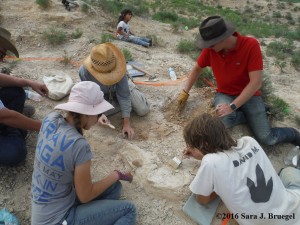
To make a field jacket, you have to leave a little extra space beyond the edges of the fossil and start digging a deep trench to create a pedestal- like chunk of rock. Once you have a nice, deep trench dug, you are supposed to undercut the fossil by digging underneath the rock pedestal. This is so that the whole field jacket (fossil and rocks included) will break off easily when the time comes to load it up and take it to the lab. To create a field jacket around your fossils, you need to use tin foil to cover the fossil and all the rock you are taking out with it.
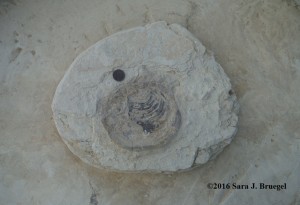
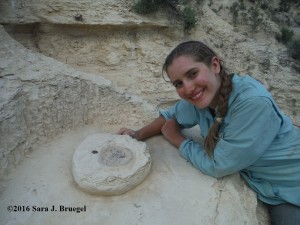
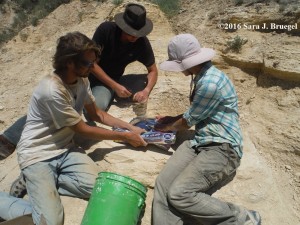
After it’s protected with foil, you’re ready to get to the messy business of mixing wet plaster. Loosely woven burlap cloth is used to strength and structure to a field jacket. As seen in the pictures below, you make the field jacket by dipping pieces of burlap into the wet plaster, then covering your tin-foil layer with that plaster-soaked burlap. Once the plaster is set and other details in place, your field jacket is ready to be turned over and taken to a lab. Fossil field work can be messy, hot, cold, windy, elusive, and sometimes exhausting, but it’s totally worth it (even enjoyable) because you know that you are seeking something valuable. Sometimes life can be a lot like working on a dig – exhausting, elusive, stormy, and downright messy. But as long as you are seeking what is most valuable, as long as you are seeking the face of Jesus Christ, our Creator and Redeemer, you will discover that it’s totally worth it. You may even find it enjoyable . . . a thrilling adventure with the dearest Friend you could ever have.
Article and Pictures © June 2016, Sara J. Bruegel
